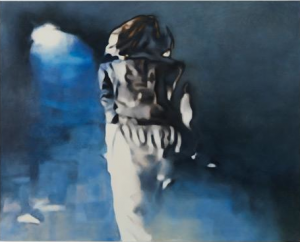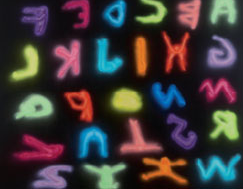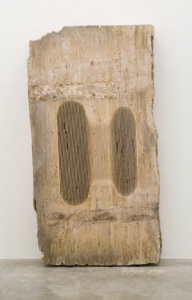
Painting and photography intertwine in this handsome if disparate show in which success hinges on how provocatively each artist elaborates upon her source material. Judith Eisler’s canvases of music or film stars seesaw between the bland and glorious, Mariah Robertson’s unique prints picture ambiguous spaces in eerily alluring color, while recent SVA grad Bryn McConnell limns vibrantly toned, if shallow, renditions of fashion spreads.
McConnell’s composition of a model draped over the edge of a bed is the show’s most attention-grabbing piece; its glowing orange and yellow highlights make Eisler’s two adjacent monochromatic paintings of Romy Schneider appear lackluster by comparison. Yet McConnell’s effort feels vacant, as she strips the identity of her subject—a model from a Miu Miu advertisement—reducing her to little more than a series of painterly strokes. Eisler, on the other hand, uses appropriated film stills to play up Schneider’s momentarily masculine look, nearly crushing her starlet charm. Similarly, in another nearby piece, Eisler seemingly morphs Deborah Harry into an astronaut by showing the singer as she retreats into a gorgeous blue shaft of light on a dark, smoky stage.
The artsy nudes and repeated palm motifs Robertson incorporates into her collagelike compositions look like borrowed stock photography, but they were actually created by the artist, who plays with photographic conventions. More pleasurable, though, are her purely aesthetic touches: horizontal bands of sunset colors, multiple images of an anonymous figure on a rooftop, and drip patterns, all creating an abstract scenario in which the imagination is set racing.
Originally published in Time Out New York, issue 777, August 19-25, 2010.



